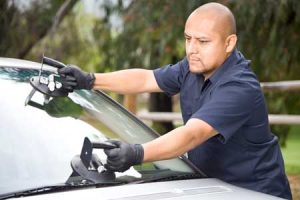What Is ADAS Calibration?
ADAS stands for Advanced Driver Assistance Systems, which are technologies designed to improve vehicle safety and automate driving tasks. These systems often include features such as adaptive cruise control, lane departure warning, automatic emergency braking, blind-spot monitoring, and more.
ADAS calibration refers to the process of aligning, adjusting, or calibrating the sensors, cameras, radar, lidar, and other components that make up these systems. Proper calibration is crucial for ADAS to function accurately and safely. It ensures that these systems can accurately detect and respond to their surroundings, including other vehicles, pedestrians, and road markings.
How do I know if my vehicle needs a calibration?
Determining if your vehicle needs ADAS calibration typically involves a combination of factors, including the vehicle’s make and model, the specific ADAS features installed, any recent repairs or maintenance performed, and the presence of warning indicators or system malfunctions. Here are some common indicators that your vehicle may require ADAS calibration:
Warning Lights or Messages: Many modern vehicles are equipped with warning lights or messages on the dashboard to alert drivers to issues with ADAS systems. If you see a warning light related to a specific ADAS feature, it’s a good indication that there may be a calibration issue or another problem that needs attention.
Recent Repairs or Maintenance: If your vehicle has undergone repairs or maintenance that involved ADAS components, such as windshield replacement, bumper repair, or suspension work, it’s likely that calibration may be necessary. Many repair procedures can impact the alignment or functioning of ADAS sensors, requiring recalibration to ensure proper operation.
Changes in Driving Behavior: If you notice changes in the behavior of ADAS features, such as adaptive cruise control not maintaining speed correctly, lane departure warning not providing accurate alerts, or automatic emergency braking activating unexpectedly, it could indicate a calibration issue.
Inaccurate or Unreliable System Performance: If you experience situations where ADAS features are providing inaccurate or unreliable information, such as false collision warnings or inconsistent lane-keeping assistance, it may be a sign that calibration is needed.
Vehicle Manufacturer Recommendations: Some vehicle manufacturers provide guidelines for ADAS calibration as part of routine maintenance or after specific repair procedures. Consulting your vehicle’s owner’s manual or contacting the manufacturer or authorized dealer can provide information on recommended calibration intervals or procedures.
Visual Inspection: Inspecting ADAS components for physical damage, misalignment, or obstruction can also help identify potential calibration issues. Look for signs of damage to sensors, cameras, radar units, or calibration targets mounted on the vehicle.
If you notice any of these signs or if you’re uncertain about the status of your vehicle’s ADAS calibration, it’s best to consult with a qualified technician or contact your vehicle manufacturer or authorized dealer for guidance. They can perform diagnostic tests and recommend appropriate calibration procedures if needed. Regular maintenance and prompt attention to calibration issues can help ensure that ADAS systems continue to function safely and effectively. Contact Rayce-Way today with any questions you have regarding your specific vehicle and to determine whether recalibration is necessary.





